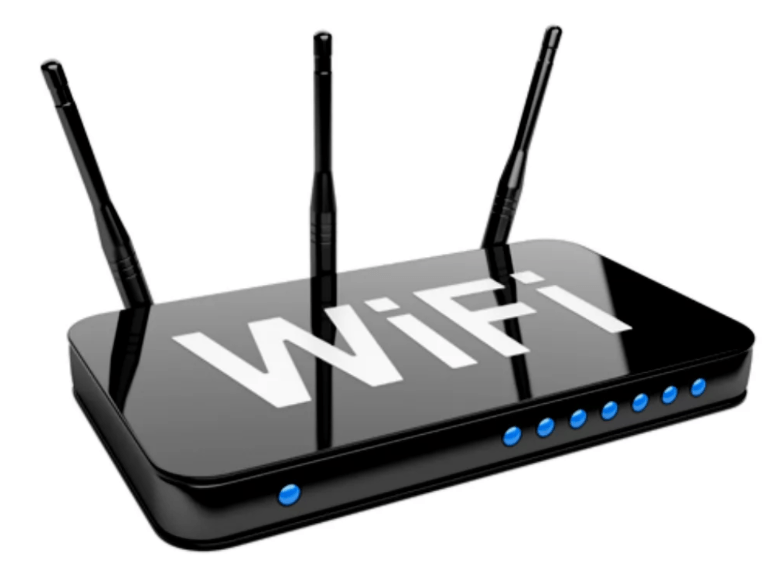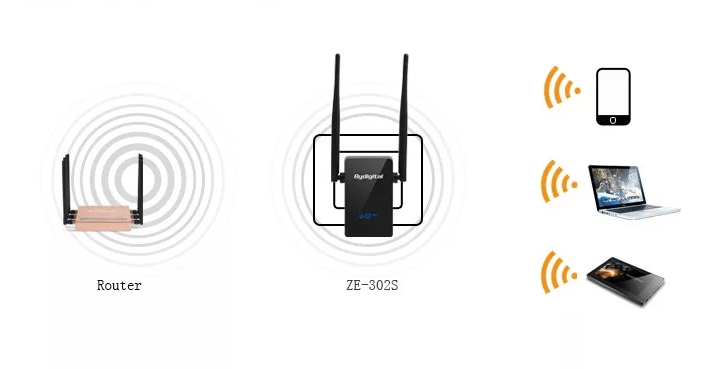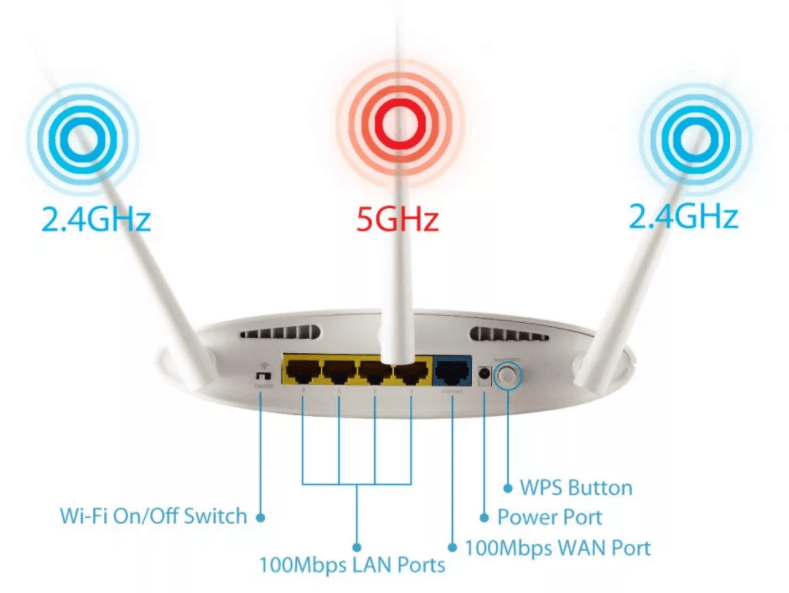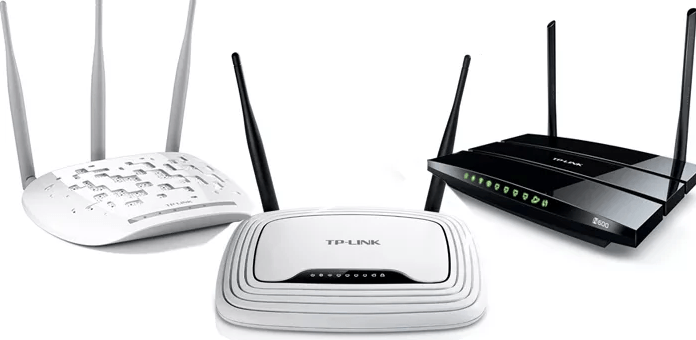It is difficult to imagine a modern home or office without a Wi-Fi router. Laptops, smartphones, TVs based on Android and Smart TVs, elements of a “smart home”, as well as a huge number of other equipment interact with each other and get access to the Internet through a router.
The speed of information transmission, as well as the stability and range of the wireless network depends on the functionality, quality of performance and other parameters of this device. In this article, we will tell you how to choose the right Wi-Fi router for your apartment, office or home so that it meets all your requirements.
Content
- 1 How to choose a Wi-Fi router by parameters - expert advice
- 2 Budget and tasks for which the WiFi router will be used
- 3 Criteria for choosing a Wi-Fi router for home
- 4 Baud rate
- 5 Range and stability
- 6 frequency range
- 7 Simultaneous dual-frequency operation
- 8 Good to know
- 9 Which firm Wi-Fi router is better to choose
- 10 How to choose a wi-fi router for your home - practical advice
How to choose a Wi-Fi router by parameters - expert advice
Read also:
Budget and tasks for which the WiFi router will be used

Mainly, the choice of a router for a private house depends on the budget that is allocated for the purchase. Now you can get an inexpensive but good WiFi router for only $ 20-30. However, in terms of functionality, such models will be extremely simple. More advanced options start at $ 50 or more. Such "monsters" as LINKSYS EA9500 or ASUS RT-AC5300 are comparable to the cost of building a budget gaming PC.
However, it is advisable to spend such an amount only if you are interested in choosing a high-quality router for an office or other large room / building in which you need to provide access to the Internet and connect many devices to a wireless network. But as a home router, to which a maximum of several smartphones and laptops will be connected, you can choose simpler options.
Criteria for choosing a Wi-Fi router for home

When choosing a router by characteristics, you need to pay attention to the type of WAN port (Ethernet, ADSL, 3G / 4G modems), the number and speed of LAN ports, the characteristics of the "Wi-Fi" network (speed and frequency), as well as the presence of USB ports and additional functions ... In addition, initially determine the location of the router in the house and the area that should be covered by the wireless network. Different models also differ in terms of signal stability and range, so there is a risk of no acceptable signal in one of the rooms when buying an unsuitable model. The working distance depends on the frequency bands supported by the home router, the number of antennas and their power.
Baud rate

When purchasing a router for home or office, pay attention to the communication standards supported by the device:
- 802.11a (maximum speed 54 Mbps);
- 802.11b (maximum speed 11 Mbps);
- 802.11g (maximum speed 54 Mbps);
- 802.11n (maximum speed 600 Mbps);
- 802.11ac (maximum speed 6.77 Gbps).
The first three are already considered obsolete, so even budget Wi-Fi routers today comply with the 802.11n standard, operating at 2.4 or 5 GHz. However, it is backward compatible with a / b / g, which means it can be used with old laptops, phones and other devices.As for the increasingly popular home and office routers with 802.11ac support, they operate in the 5 GHz frequency range, and their theoretical maximum speed is 6.77 Gbps. However, it is achieved only when using powerful Wi-Fi routers with 8 antennas.
Range and stability

On forums, routers are often criticized for the fact that their range does not correspond to the parameter declared by the manufacturer. However, users usually ignore the fact that the distance is given under ideal conditions. The more interference (magnetic, radio, physical, and so on) around, the shorter the range will be.
As for the stability of work, it directly depends on the number of installed antennas. If it is only one, then the speed will decrease due to the need to work simultaneously with the reception and transmission of data. In a router with two antennas, one acts as a receiver and the other as a transmitter.
In a router with three antennas, two are already transmitting and one is receiving. The maximum number of antennas that are currently installed in advanced models is eight. At the same time, regardless of their number, you should make sure when buying that the antennas on the device are removed, because this will be required if you need to replace them with more powerful ones. However, cheap routers do not offer this feature.
frequency range

As noted above, any selected model of WiFi router can operate at two frequency options: 2.4 and 5 GHz. At the same time, cheap devices support only the first option of the channel width, when modern solutions of the middle and premium classes support both frequency ranges. Often users have a question, which router is better: supporting only 2.4 GHz or capable of also operating in the 5 GHz range. However, in this case, it all depends on your preferences.
If the range of the router is important to you, then you can get it in the 2.4 GHz band. Moreover, such a signal is perfectly captured even with indirect visibility and is accurately supported by both new and old devices. The trump card of the 5 GHz band is a large number of channels used (19) and significantly more free air, which ensures the stability and uninterrupted operation of the network.
Simultaneous dual-frequency operation
Dual-band routers have a pair of antennas, so they can simultaneously operate at both 2.4 GHz and 5 GHz. At the same time, if necessary, any of them is manually disabled in the settings. In this operating mode, the antennas will work according to the principle described above: one for reception, and the second for transmission.
Good to know

When thinking about which router to choose, you need to take into account a few more nuances that will help you decide on a purchase. First of all, you need to know about the data encryption methods supported by the device. Usually, even the simplest routers include 2 existing WEP and WPA methods, but the second option is considered more reliable.
You also need to pay attention to the supported protocols. In Russia, the most common options are PPPoE, PPTP and L2PT... The first on the list is the most popular due to its ease of setup and the ability to get faster connection speeds. Moreover, if, in addition to the Internet, you also need to receive Internet television or IP telephony services through a router, it must additionally support multicast.
Wi-Fi routers with USB ports deserve special attention. To such models, you can connect additional devices such as a 3G or 4G modem (with the support of the corresponding function) or an external drive. In the first case, you can distribute mobile Internet via Wi-Fi to all devices in your home or office, and connecting hard drives or flash drives will allow you to share files on them with all users in the router's network.
Last, but not least, is the port speed of the router.Although most providers today offer a maximum bandwidth of 100 Mbps, rapidly developing technologies bring closer the moment when even in the most remote corners of our country it will be possible to enjoy an impressive 1 Gbps... For this reason, when buying a router, you need to make sure that this is exactly the speed that the WAN and LAN ports of the router support.
In addition, even now, such a bandwidth may be important to you if you are going to connect through a router to a PC or local storage in order to play movies on the TV from it. At the same time, do not forget to look at the number of ports, because even models with only 2 LANs are offered on sale, which may not be enough for simultaneous connection of all devices.
Which firm Wi-Fi router is better to choose

Almost every manufacturer offers dozens of router options at different price points. Even brands such as Xiaomi, Belkin, Apple and Google offer their device options. Of course, excellent models are produced by the leaders of the telecommunications market Huawei and ZTE. However, for ourselves, we were able to single out the following five popular router manufacturers, according to user reviews and expert opinions, ahead of all competitors in terms of functionality and price-quality ratio:
- TP-LINK
- ASUS
- LINKSYS
- D-Link
- Cisco
How to choose a wi-fi router for your home - practical advice
To choose a good Wi-Fi router for your home, apartment or office, you first need to decide on the budget and tasks that it will perform. If you are looking for a device for your company, then it is better not to save on it. Remember that any problem with the network in this case will affect your income. For home, on the contrary, it rarely makes sense to purchase premium class devices. Following our recommendations, you can easily decide which Wi-Fi router is better to buy for private or corporate use.



